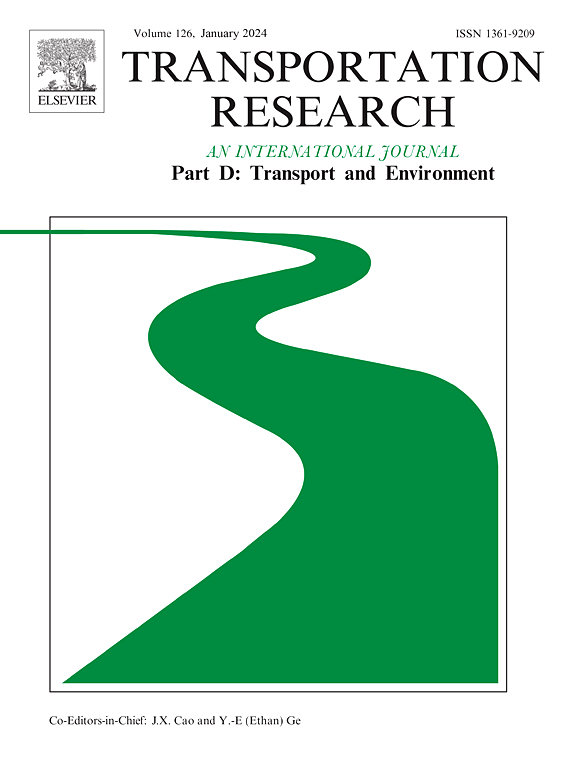Can public transportation improve equity in high-level healthcare time accessibility?
IF 7.3
1区 工程技术
Q1 ENVIRONMENTAL STUDIES
Transportation Research Part D-transport and Environment
Pub Date : 2025-05-13
DOI:10.1016/j.trd.2025.104804
引用次数: 0
Abstract
This paper establishes an analytical framework, based on the Gaussian three-step floating catchment area method incorporating the integration of demand-minus-supply and location entropy, to address two fundamental concerns regarding equity in public services from both geographic and demographic perspectives, respectively: spatial accessibility inequity and population-accessibility-gap. The methodology was applied in Dalian, China by evaluating regional variations in healthcare accessibility across three travel scenarios: driving, public transport (PT) without- and with-metro. The results show that while the spatial distribution patterns are similar, accessibility equity is greater with PT with metro, compared to PT without metro or driving. The “relative surplus” and “surplus” types of time accessibility are found in surrounding areas adjacent to the city center, rather than being concentrated in the downtown. This study also highlights that the benefits of promoting healthcare equity through public transport are more pronounced at the demographic level than at the geographic level.
公共交通能提高高水平医疗时间可及性的公平性吗?
本文基于需求-供给和位置熵的高斯三步浮动集水区方法,构建了一个分析框架,从地理和人口两个角度分别解决公共服务公平性的两个基本问题:空间可达性不平等和人口-可达性差距。该方法在中国大连被应用,通过评估三种旅行场景下的医疗可及性的区域差异:驾驶,公共交通(PT),无地铁和有地铁。结果表明:在空间分布格局相似的情况下,有地铁的交通运输区可达性公平性高于无地铁或无人驾驶的交通运输区。“相对剩余”和“剩余”类型的时间可达性主要分布在邻近市中心的周边区域,而不是集中在市中心。这项研究还强调,通过公共交通促进医疗公平的好处在人口层面上比在地理层面上更为明显。
本文章由计算机程序翻译,如有差异,请以英文原文为准。
求助全文
约1分钟内获得全文
求助全文
来源期刊
CiteScore
14.40
自引率
9.20%
发文量
314
审稿时长
39 days
期刊介绍:
Transportation Research Part D: Transport and Environment focuses on original research exploring the environmental impacts of transportation, policy responses to these impacts, and their implications for transportation system design, planning, and management. The journal comprehensively covers the interaction between transportation and the environment, ranging from local effects on specific geographical areas to global implications such as natural resource depletion and atmospheric pollution.
We welcome research papers across all transportation modes, including maritime, air, and land transportation, assessing their environmental impacts broadly. Papers addressing both mobile aspects and transportation infrastructure are considered. The journal prioritizes empirical findings and policy responses of regulatory, planning, technical, or fiscal nature. Articles are policy-driven, accessible, and applicable to readers from diverse disciplines, emphasizing relevance and practicality. We encourage interdisciplinary submissions and welcome contributions from economically developing and advanced countries alike, reflecting our international orientation.

 求助内容:
求助内容: 应助结果提醒方式:
应助结果提醒方式:


